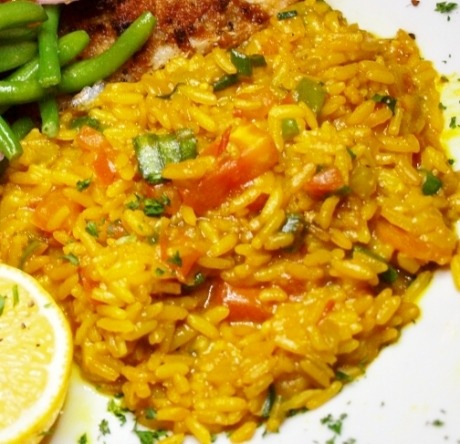The Food Almanac: March 29, 2011
In The Food Almanac, Tom Fitzmorris of the online newsletter, The New Orleans Menu notes food facts and sayings.
Eating Calendar
This is Wild Rice Week. Wild rice is indeed wild, but it's not really rice. Although it is now being cultivated, the plant is exactly as the Native Americans found it for centuries in the bogs in Minnesota. The long distance of its relationship to true rice is obvious when you eat it. It has a nutty flavor more like that of oats, or barley than rice. But, really, it has a taste all its own. It's most often served with game, and for decades any restaurant that served duck served wild rice with it. More often than not, wild rice in a restaurant is combined with regular rice, for the usual reason: wild rice is very expensive. It cooks quickly — just twenty minutes or so in a steamer.
Today is alleged (by some sources) to be National Lemon Chiffon Cake Day. Chiffon cakes are an American invention, and get their spongy, light consistency by incorporating beaten egg whites into the batter. Yawn.
Gourmet Geography
The Wild Rice River runs almost 250 miles through mostly flat and occasionally marshy prairielands in the southeastern corner of North Dakota. It's a tributary of the Red River of the North, which the Wild Rice joins just south of Fargo. Another shorter river of the same name comes from the Minnesota side of the Red. They have in common an apt name. The bogs they drain are precisely the environment where wild rice grows wildly. Dine at the Kic Bac Bar and Grill, the only eatery in Cogswell, six miles east from the first little lake that feeds the Wild Rice River.
Science in Food
Biologist Charles Elton was born today in 1900. He was the first to use the term, 'food chain' describing the deep interdependent relationships among plants and animals in nature, and how critical those relationships are to all living things. He thought of it as an energy flow, with plants taking up energy from the sun to produce food for herbivores, which are then food for carnivores (to oversimplify the food chain a great deal).
Edible Dictionary
dirty rice, n. — A Cajun side dish made by mixing rice with ground pork, pork liver, chicken giblets and gizzards, black pepper, and cayenne. The recipes differ from cook to cook, and usually include savory vegetables like onions, celery, and bell pepper. Crushed red pepper flakes are also common. Dirty rice can be said to be a simplified version of jambalaya, with fewer additives. In its Louisiana homeland, it's most often served with poultry, particularly fried or roasted chicken. It's also good with pork chops.
Deft Dining Rule #233
Dishes with colorful names are divided into two categories: the delicious and the terrible. There is no in between. The very fact that it has an unusual name means the dish makes a big flavor statement.
Food at War
On this day in 1943 — right in the middle of World War II — meat, cheese, and butter began to be rationed in the United States. The weekly ration for meat per person was 28 ounces. That was more of a hardship then than it would be now, because the American diet then was more meat-based. A large percentage of the American public now eats far less than 28 ounces of meat a week, by choice. Seafood eaters fared well during rationing. Fish and shellfish were never rationed, even though they were in shorter supply.
Annals of Soft Drinks
Today in 1886, druggist John S. Pemberton began advertising a new brain tonic and intellectual beverage (as he called it), made from kola nuts and containing a cocaine precursor. He named it Coca-Cola. He did not make much money with it, because before the stuff hit really big, Pemberton sold the formula to Asa Candler, who was the marketing genius.
The Old Kitchen Sage Sez
If you add Coca-Cola, or anything like it to a recipe, you may be doing so just so you can say, "Oh, yes, I make my ham glaze with root beer."
Music to Eat With Your Man By
Today in 1918, actress and blues singer Pearl Bailey was born. Behind the scenes, she was also an accomplished cook. "I don't like to say that my kitchen is a religious place," she said, "but I would say that if I were a voodoo priestess, I would conduct my rituals there."
Words to Eat By
"Food history is as important as a baroque church. Governments should recognize cultural heritage and protect traditional foods. A cheese is as worthy of preserving as a sixteenth-century building." — Carlo Petrini, the founder of the Slow Food Movement.
Words to Drink By
"Popularity, I have always thought, may aptly be compared to a coquette — the more you woo her, the more apt is she to elude your embrace." — John Tyler, tenth U.S. President, born today in 1790.

